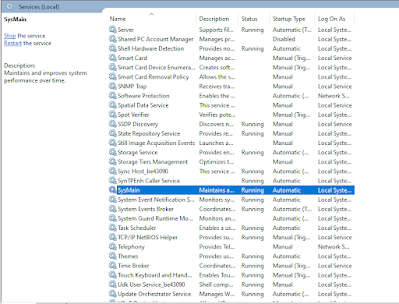beginner developers face a real challenge.
Show computer? No money to upgrade? we've got you.
Many students and new developers struggle with old, sluggish laptops (like Core 2 Duo, 2GB/4GB RAM). Modern Windows eats up RAM and CPU, making coding feel impossible. Buying a new machine? For those tight on cash, that’s just a dream.
But don’t give up! With 5 years of system-tuning experience, I’ll share free, developer-grade tricks to revive your old PC. Turn it into a fast, coding-friendly tool no upgrades needed.
Let’s fix this together...!
1. Reduce Background Processes & Startup Bloat
1.1 Disable Startup Apps
Ctrl + Shift + Esc → Startup tab → Disable non-essential apps (e.g., OneDrive, Discord, Spotify).
⚡ Frees RAM and CPU on boot.
1.2 Trim Background Apps
Settings → Apps → Startup and Privacy → Background apps. Disable apps running in the background.
2. Optimize Visual Performance
2.1 Adjust Visual Effects
Search for "View advanced system settings" → Performance Settings → Select "Adjust for best performance" to disable animations/transparency.
⚡ Reduces GPU/CPU load.
2.2 Disable Transparency & Effects
Settings → Personalization → Colors → Turn off Transparency effects.
Settings → Accessibility → Visual effects → Disable animations.
3. Tweak Power & Performance Settings
3.1 Enable High-Performance Power Plan
Search for "Choose a power plan" → Select "High performance".
Search for "cmd" in the Start Menu, right-click on "Command Prompt," and select "Run as administrator."
Type or paste the following command and press Enter
powercfg -duplicatescheme e9a42b02-d5df-448d-aa00-03f14749eb61
✅ You might see "Ultimate Performance" directly, or you might need to click "Show additional plans."
For Laptops ✔ Use "Balanced" to avoid battery drain.
3.2 Optimize CPU Prioritization
Ctrl + Shift + Esc → Right-click your programming IDE (e.g., VS Code) in Details tab → Set priority to "Above normal" (temporary).
4. Free Up RAM & Manage Virtual Memory
Increase Virtual Memory (Page File)
Advanced system settings → Performance Settings → Advanced → Virtual Memory → Change → Uncheck automatic → Set custom size (1.5x RAM for "Initial", 3x for "Max").
2GB RAM → 3072 MB Initial, 6144 MB Max.
4GB RAM → 6144 MB Initial, 12288 MB Max.
8GB RAM → 12288 MB Initial, 24576 MB Max.
Initial (1.5x RAM): 2GB RAM * 1.5 = 3GB. Since 1GB = 1024MB, then 3GB = 3 * 1024 MB = 3072 MB (2GB RAM Computer Initial)
Maximum (3x RAM): 2GB RAM * 3 = 6GB. So, 6GB = 6 * 1024 MB = 6144 MB
✔ Only do this if using an SSD; avoid on HDDs.
5. Disable Ono-Essential Services
Target Resource - hungry Services
Press Win + R → services.msc → Disable
- SysMain (Superfetch – useful for HDDs, disable for SSDs) Windows Search (indexing)
- Windows Search (indexing)
- Connected User Experiences (telemetry)
- Cortana (if unused)
6. Extreme Performance Boosts
Run Windows in "Game Mode" for Coding
Press Win + G → Open Game Bar → Settings → Enable "Game Mode"
7. Disable Windows Features You Don’t Need
Run Windows in "Game Mode" for Coding
Press Win + R → optionalfeatures → Disable
- Internet Explorer 11 (if not needed)
- Print and Document Services (unless you print)
- Windows Media Player (use VLC instead)
- Work Folders Client (useless for most devs)
8. Kernel & Memory Tweaks
Enable Performance Boost in Registry
Press Win + R → regedit → Navigate to
HKEY_LOCAL_MACHINE → SYSTEM → CurrentControlSet → Control → Session Manager → Memory Management
- Set these values
- ClearPageFileAtShutdown = 0
- DisablePagingExecutive = 1 (keeps drivers in RAM)
- LargeSystemCache = 1 (for 4GB+ RAM)
9. Hardcore Service Disabling (via PowerShell)
powershell →
- Stop-Service -Name "SysMain" -Force
- Set-Service -Name "SysMain" -StartupType Disabled
- Stop-Service -Name "WSearch" -Force
- Set-Service -Name "WSearch" -StartupType Disabled







2 Comments
This guide really helped me! I’ve been struggling with my slow laptop for months, and now it finally runs smoother for coding. Turning off background apps made a big difference. Thanks for sharing your experience!
ReplyDeleteThank you
ReplyDelete